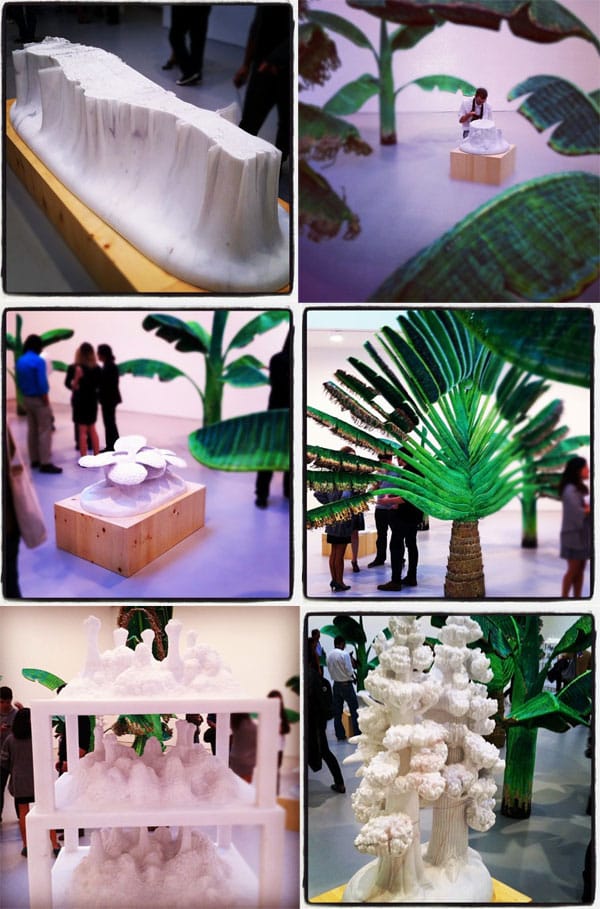Islands of Luxury Frozen in Marble and Rattan
Walking through Yutaka Sone’s Islands exhibition at David Zwirner Gallery, I was reminded of a Victorian greenhouse. If the artist, judging by his interviews, seems to feel his work is postmodern, it appears suprisingly pre-modern to me as the objects feel precious and exotic, like the remnants of s

Walking through Yutaka Sone’s Island exhibition at David Zwirner Gallery, I was reminded of a Victorian greenhouse. While the artist, and more specifically his champions like Mizuki Endo, feel his work is postmodern, I perceived them as surprisingly pre-modern in that the objects feel precious and exotic, like the remnants of some ancient civilization or tribe.
The mood in the gallery is one of luxury. The rattan palm and banana tree sculptures were created in the artist’s studio in Mexico, while the marble objects on wooden plinthes were sculpted in his Chinese outpost. Only the show’s large sign, painted in blue paint by the artist at the opening in a cursive script, feels less polished and imperfect.
“Six Floor Jungle” (2010) and “Rafflesia Flower” (2010) were easily the most interesting objects on display. “Six Floor Jungle” is a riff off of the austere minimalism of artists like Sol LeWitt but they struck me as inspired by tiered display cases or stacked tables as much as art objects. On the tops of each “table” are carved mounds with pertruding forms that I thought resembled upturned chicken drumsticks. They added a level of humor (was it critique?) to the the austerity of the stone.
Sone seems to enjoy remixing the natural and manmade worlds. His “Little Manhattan” (2007-9) is a sculpture of the island of Manhattan complete with bridges and buildings. The sides drape down like they were made of cloth. This small monument to a place so overbuilt by humanity — that we often forget it was born on the back of the natural world that was razed, flattened and domesticated for human use — is a fascinating object that stops you dead in your tracks. But placed in the center of a large room “Little Manhattan” felt quietly grand in the same way a royal sarcophagus does and even chillingly erie like a body under a shroud.
What I find fascinating about these works is their ability to appear timeless. The decaying edges of the trees make them feel more realistic but they also introduce a conscious passage of time that these works wouldn’t otherwise have. It’s as if the idea of time is central to understanding all of these pieces and, of course, nothing is more of a luxury than time itself.
Yutaka Sone’s Island closes at David Zwirner (533 West 19th Street, Chelsea, Manhattan) on October 29.
All images taken using Instagram at Islands. Image captions (clockwise from top left): “Little Manhattan” (2007-9), “Light in between Trees #3 (tree trunk)” (2010), “Tropical Composition/ Travelers palm no1” (2011), “Light in between Trees #2” (2010), “Six Floor Jungle” (2010), and “Rafflesia Flower” (2010).





